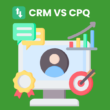Table of Contents Show
Discover compelling strategies and insightful advice on how to start a cloth business, and navigate your way to entrepreneurial success in the fashion industry!
Developing Your Business Idea
Innovation transforms the fashion industry into an entrepreneurial outback, offering untapped potential. Proper analysis of the market and its trends will spark your innovative ideas and set your business apart from the rest.
In the entrepreneurial fashion industry, analyzing market trends and integrating passion into your business plan can lead to unique innovations setting your brand apart.
Nurturing your dream into a successful clothing line involves weaving your passion into every fabric of your business. Defining your unique selling proposition, understanding your target audience, and careful product planning are crucial steps.
1. Researching the Market
Knowing your playing field is crucial when starting a clothing business. The first essential step is to study the current fashion landscape and prevalent market trends.
Follow these steps to do market research for your business:
- Identify prevailing fashion trends
- Establish the degree of market saturation
- Understand consumer behavior and preferences
- Assess case studies of successful clothing businesses
- Analyze international fashion markets
- Spot emerging trends
- Determine the sustainability of styles or fashion movements
- Track fashion industry publications and reports
2. Identifying Your Target Audience
Understanding your customers is the cornerstone of a successful clothing business. You must pinpoint who will be buying, wearing, and loving your products.
- Establishing your target age range: How old are your ideal customers?
- Recognizing your customer’s gender: Are they women, men, non-binary, or are your clothes suitable for all genders?
- Identifying their income bracket: Will your products cater to high-end consumers, or are they budget-friendly?
- Understanding their lifestyle: Are your clothes meant for active, casual, or high-fashion personal styles?
- Determining their location: Are they located globally, or are you focusing on a specific national or regional market?
- Exploring their values: Do your customers value sustainable products? Are they inclined towards specific social messages or causes?
- Investigating their shopping habits: Do they buy online or prefer brick-and-mortar stores? How often do they shop for new clothes?
3. Defining Your Unique Selling Proposition (USP)
In the competitive apparel industry, a Unique Selling Proposition (USP) serves as a beacon to attract customers. Your USP is your cloth business’s unique element that sets you apart from the crowd, adding an inherent value to your products and services. It generates a compelling reason for customers to choose your brand over others.
- Identify a segment: Select a segment of the clothing market where your business can excel
- Consider what makes your clothing unique: Is it the design, material, production process, or pricing?
- Think of your brand’s ethos and values, how do they integrate into your USP?
- Analyzing your competitors: What can you offer that they currently do not?
- Maintaining consistency: Ensure your USP is reflected at every customer touchpoint of your clothing business.
4. Planning Your Product Range
When conceptualizing your clothing product range, it’s pivotal to curate a balanced and practical assortment that appeals to your target customers while staying true to your brand ethos. This involves thoughtful ideation and careful execution, transforming your designs from sketches into tangible products.
You can plan your product range by following these steps:
- Study your target audience’s preferences and needs.
- Brainstorm unique designs that reflect your brand’s identity.
- Decide on the number of product categories (e.g., tops, bottoms, accessories) based on your bandwidth and budget.
- Create a line sheet with all your products, their sizes, colors, and other specifications.
- Plan for seasonal offerings and limited edition collections.
- Consider sustainability and ethical production methods wherever possible.
Creating Your Brand Identity
Embracing authenticity is key to the success of your clothing business. Authenticity roots your brand’s identity, offering a unique perspective that distinguishes you from the crowd.
When it comes to the clothing industry, the fusion of fashion and brand identity can often form a compelling narrative, allowing your brand to resonate with your audience on a deeper level. The way you incorporate trends while staying true to your unique style will define your brand’s perception in the market.
1. Choosing a Business Name
Choosing a business name involves more than just picking an appealing name. It’s about capturing the essence of your brand, its character, and its unique selling proposition. It’s an essential step in the journey from musings to manifestations in your clothing business.
- Define what your brand represents
- Brainstorm name options
- Check for domain availability
- Ensure the name is not trademarked
- Get feedback from trusted sources
- Ensure the name is easy to pronounce and remember
- Consider potential international implications
2. Designing a Logo and Visual Identity
A leading factor that breathes life into a clothing brand is its logo and visual identity. Color, shape, texture, and the emblem itself are crucial nuances that infuse visual excitement, establishing an indelible imprint on your clientele.
- Explore a variety of shapes and textures that resonate with the sentiment of your brand
- Use color psychology to choose appropriate colors for your logo, ensuring they reflect the characteristics you want your brand to project
- Consider your target audience’s preference while designing
- Create a visual language that is consistent across all platforms
- Ensure scalability while designing the logo to maintain its essence on all mediums
- Seek professional Support, if necessary, to incorporate details while keeping the design simple and easy to understand
3. Crafting Your Brand Story
Harnessing the power of storytelling can make your clothing brand more relatable and memorable. Craft a narrative that encompasses your brand’s origins, values, and future aspirations, to resonate with your target audiences.
By weaving tales with threads, you not only sell products but experiences and emotions. An emotion-infused brand story adds depth to your clothing line, shaping a community of loyal customers who connect with your brand beyond the fabric.
4. Building Your Online Presence
Harness the power of the digital world for your clothing business! The e-commerce space is bustling with opportunities—from easy accessibility to global exposure. Plus, an enticing website can add that ‘chic’ factor to your brand, influencing purchase decisions.
Having a substantial online presence in the apparel industry is not an option, it’s indispensable. It boosts your credibility, extends your reach, and provides a platform to showcase the latest fashion trends. Be sure to be fashionably social—it greatly determines your success!
Setting Up Your Cloth Business
Embarking on a clothing business journey involves meticulous groundwork. It includes fulfilling legal requirements, registrations, and researching potential suppliers and manufacturers. Moreover, a sound plan for production and inventory management, along with a shrewd pricing and cost strategy, are key components to set you on the path to success.
Realizing your clothing concept requires proactive steps to set your business infrastructure. This encompasses choosing the right business partners, solidifying your legal footing, planning production wisely, and bottoming out strategic pricing. Remember, the journey of establishing a successful clothing business starts with the right foundational steps.
1. Legal Requirements and Registrations
Starting your clothing business on a strong legal foundation is vital. Understanding requirements and registrations ensures you’re operating within the law, preventing costly surprises down the road. It’s not just smart business, it’s a safeguard.
Ensuring legal compliance from the outset protects your apparel venture from unnecessary risks. From permits to trademarks, these legalities protect and legitimize your business. Getting them right from day one is like an insurance policy for your brand.
Legal compliance isn’t just about avoiding penalties. It’s about building a reputation for transparency, compliance, and integrity. In the cutthroat world of fashion, a brand that understands and meets its legal obligations stands apart.
2. Finding Suppliers and Manufacturers
Kickstarting your clothing venture calls for significant diligence in securing a reliable supply chain. Don’t curb on research; delve deep to identify suppliers who guarantee quality and timely delivery. Evaluating suppliers on credibility and stability can be a game-changer for your business.
Manufacturing forms the bone structure of your clothing line. Opt for manufacturers who resonate with your brand’s ethos and maintain transparency about their methods. Collaborating with a manufacturer who is an expert in your type of clothing can give your business a tremendous lift-off.
Consistency in product quality is rooted in the manufacturer you choose. Explore potential manufacturers’ portfolios, get samples, and weigh the cost-quality scale well. Remember, a well-chosen manufacturer can not only streamline product development but also elevate the entire customer experience.
3. Setting Up Your Production and Inventory Management
Mastering the science of stock is key to success in the clothing business. From accurate forecasting to staying on top of trends, managing production and inventory carefully is paramount. The right strategies can help prevent stock-outs and overstock, and keep your cash flow healthy.
Efficient inventory management techniques are essential for clothing businesses. Methods such as bulk ordering for best sellers, using real-time inventory tracking systems, and maintaining a safe stock can add significant value.
Remember, inventory management isn’t a set-it-and-forget-it process. Regular audits and constant adaptation to emerging trends and shifts come with the territory. Stay agile and ready to pivot quickly in response to changes in demand and supply chain scenarios.
4. Establishing Pricing and Costing Strategies
Crafting smart pricing strategies plays a vital role in establishing a profitable cloth business. The art lies not just in covering your costs, but in creating value for your customers that justifies the premium.
A deep understanding of your target market combined with production costs can help unlock profit margins. Remember, pricing is more than numbers – it embodies the value, quality, and brand identity your cloth business stands for.
Marketing and Promoting Your Cloth Business
Crafting a unique narrative for your promotion can set your apparel venture apart. Understand your brand well, establish an engaging story around it, and communicate effectively to resonate with your target audience.
To elevate your clothing brand, incorporate effective promotional methods. This can include collaborating with influential personalities, hosting contests, utilizing social media, and participating in fashion events to extend your brand’s reach and visibility.
1. Creating a Marketing Plan
Embark on building your marketing blueprint with strategic planning. Focus on identifying your key customer segments, sales channels, promotional strategies, and growth opportunities to outclass competitors in the clothing business.
The heart of your marketing magic lies in developing a plan that appeals to your apparel brand. This includes tactical campaigns such as seasonal sales, collaborations, brand partnerships, and influencer marketing.
Remember, a good marketing plan is a blend of creativity and data-driven decisions. By studying analytics and customer behavior, you can fine-tune your strategies and create a marketing plan that garners results.
2. Utilizing Social Media and Online Advertising
With the world virtually at our fingertips, social media platforms serve as an ideal marketplace for your clothing brand. From regularly posting engaging content to interacting with your followers, optimizing social media defines your brand visibility and stimulates sales.
Online advertising is an unignorable element in modern-day fashion. Engage your target audience with well-curated ads on popular platforms like Google, Facebook, and Instagram. Strategic ads, combined with compelling visuals, can drive substantial traffic to your online store.
AI-driven analytics tools can boost your ROI remarkably. Integrating such tools in your advertising strategy allows you to track ad performance, aiding in smarter ad investments. This approach assures your ads reach the right audience at the right time with the right message.
3. Collaborating with Influencers and Bloggers
In the world of fashion, influencers reign supreme. The key to capitalizing on this? Build genuine relationships with relevant influencers who can effectively amplify your brand’s visibility and appeal. This isn’t about one-off promotional deals, rather it’s about fostering long-term partnerships that authentically align with your brand ethos.
Bloggers offer a unique avenue for exposure. They have devoted followers who trust their recommendations. Seek partnerships with trusted fashion bloggers that resonate with your target audience. Let them experience your product first-hand so they can provide their audience with authentic reviews.
Never underestimate the power of mentions. A single blog post or social media share from a respected fashion influencer or blogger can attract hundreds, even thousands, of potential customers to your brand. Your collaborations should always be strategic, targeted, and most importantly, synergistic with your brand identity.
4. Participating in Trade Shows and Events
Trade shows serve as a robust platform for your clothing business, enabling your brand’s visual and tactile allure to grab the spotlight. It validates your business’s credibility, encouraging fruitful relationships with potential customers and industry authorities.
Preparing for your event appearance isn’t just about setting up a booth. Careful thought on your team’s outfit and the presentation of your clothing range can make a stirring impact, bridging the gap between your brand and the crowd.
Trade shows and events don’t just widen your brand reach, but also provide invaluable insights into the competition and market trends. These experiences fortify your decision-making and strategic planning, encouraging the growth of your clothing business.
Managing Operations and Finances
Grasping the financial framework of your clothing business is critical. Detailed financial planning enables forecast of growth, identification of key revenue streams, and effective management of costs. So, if you want to know how to start a cloth business, you will need to streamline its finances, and business operation.
Embed a sound financial plan into your apparel venture’s blueprint. Proactively tackling financial hurdles ensures profitability, buffers against unforeseen circumstances, and aids in capitalizing on lucrative opportunities.
1. Structuring Your Business Operations
Mapping potential workflows, adopting efficient methodologies, and implementing result-driven tactics — your clothing business ought to stitch together an operational strategy that mirrors your intent: success. From determining the cycle of product development to handling order fulfillment, your action plan becomes your roadmap.
Spot-on execution makes all the difference in apparel business operations. Dress up your business with effective strategies, ensuring seamless production, delivery, and, not to forget, excellent customer service. A well-planned operation creates both — an impressive brand image and a loyal customer base.
Don’t forget, that your operations need regular reviewing and updating. Staying flexible and receptive to modification, whether it be making small tweaks or complete overhauls, is crucial to adapt to the changing market dynamics. Revamp, evolve, and keep your business tailor-fit to trends and customer needs.
2. Managing Cash Flow and Budgeting
Becoming a money-smart clothing business owner involves going beyond the basic math of your operations. It means understanding revenue streams, and profit margins, and how to maximize them without sacrificing the quality of your garments.
Mastering budgeting in the apparel industry is key to maintaining healthy cash flow. Underestimating costs or overestimating sales can lead to financial turmoil. It’s vital to closely track and manage expenses, income, and expected future cash flow.
The fundamentals of cash flow control involve a keen awareness of your inventory levels and sales velocity. Sales forecasts should be regularly adjusted based on real-time performance data, and your budget should reflect these adjustments promptly.
3. Hiring and Training Employees
Specializing in fabrics is one thing, but success in the clothing business also hinges on your team personnel. Implement robust staffing procedures and comprehensive training programs to ensure your workforce remains adaptable, efficient, and skilled.
In the apparel sector, each team member’s contribution significantly impacts the final product. Prioritize the hiring of talented individuals and invest in their continuous training. This will foster a competent team that understands the dynamics of the clothing market.
4. Implementing Quality Control Measures
Quality control measures are non-negotiable in a clothing business. Larger than Life Threads explains how they are essential for ensuring your products meet customer expectations while also reducing wasted resources and time.
Incorporating quality measures such as fabric testing, size fitting, seam strength check, and colorfastness examination can set the bar high for your apparel business. It not only ensures consistency but also builds a strong brand reputation.
Implementing quality control measures is an ongoing process. Rigorous inspection at every production stage is crucial, right from material sourcing until the finished product reaches the customers. Persistency blossoms into fabric excellence, impressing both profane and profound customers.
Conclusion
In this blog, we explained how to start a cloth business from scratch. Clothing business requires a combination of strategic planning, efficient operations, and a focus on quality. By following these tips, you can build a strong brand reputation and achieve success in the competitive world of fashion. Do you have any feedback, share it with us via email: hi@productivityshift.com
More reading for you:










